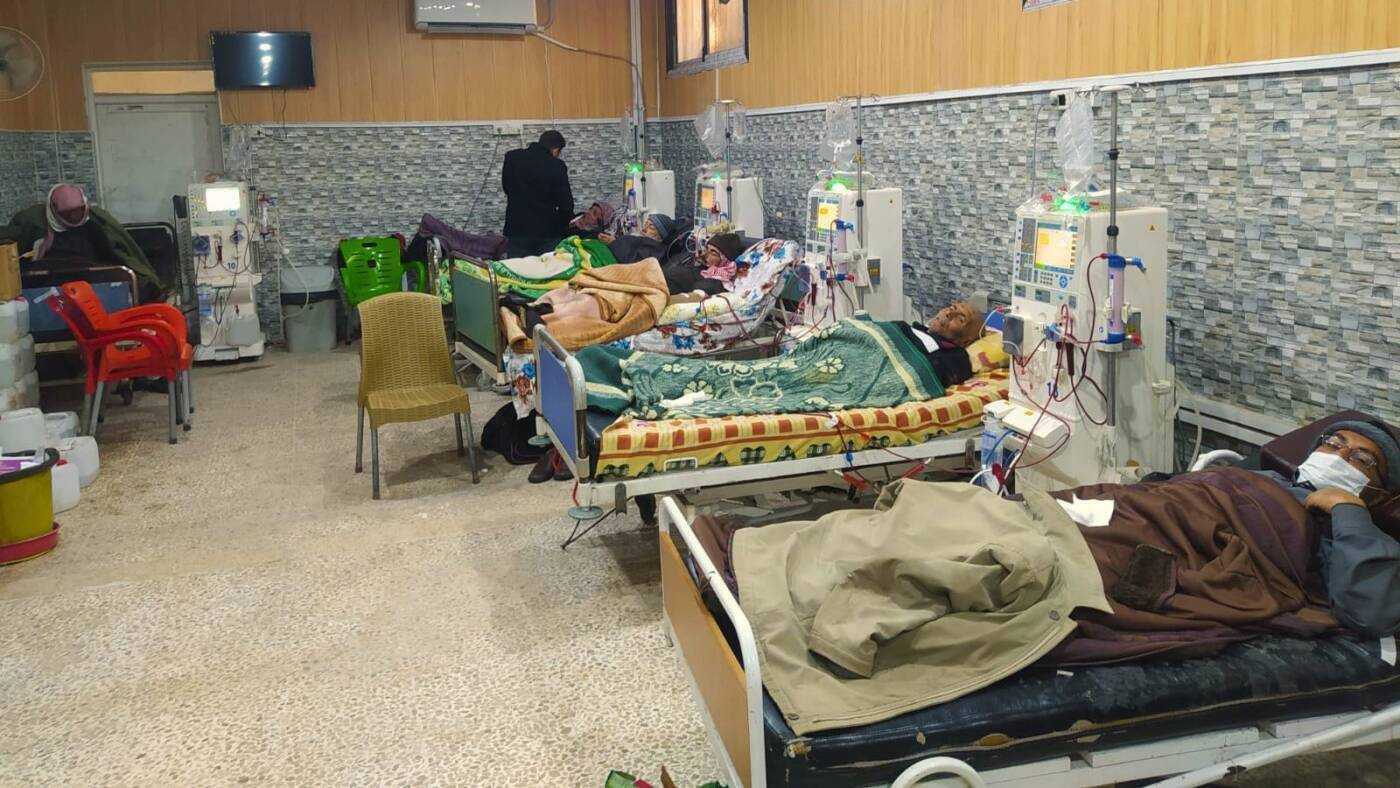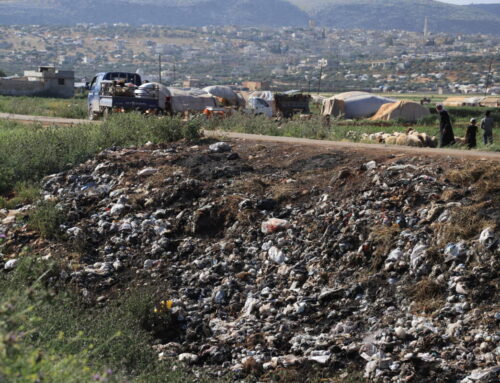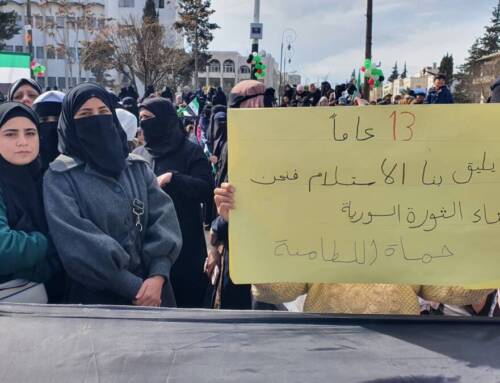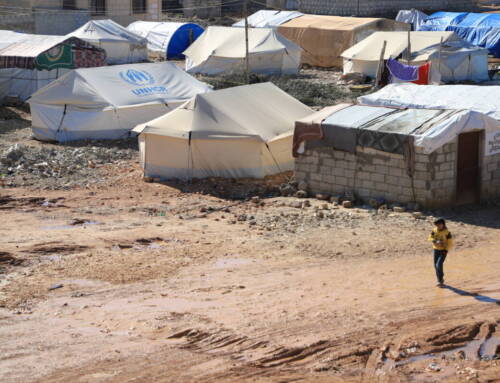Crush syndrome and cancer: Earthquake deals blow to Idlib’s health sector
IDLIB — The February 6 earthquake that struck northern Syria […]
24 February 2023
IDLIB — The February 6 earthquake that struck northern Syria and southern Turkey dealt another blow to the already-strained medical sector in northwestern Syria, which is facing new challenges as Turkey’s border remains closed to patients.
The administration of the Bab al-Hawa border crossing between Syria’s Hay’at Tahrir al-Sham (HTS)-controlled Idlib province and Turkey said in a circular posted to private messaging groups on Thursday that the entry of Syrian patients to Turkey was still suspended, more than two weeks after the earthquake.
The ongoing closure cuts off Syrian patients like Khatam al-Mustafa (a pseudonym), a 32-year-old with colon cancer, from the treatment they were receiving in Turkey. Al-Mustafa has undergone five sessions of chemotherapy at the State Hospital in Antakya, one of the southern Turkish cities most badly affected by the February 6 earthquake.
Her last session was in January 2023, and she is now waiting for the Bab al-Hawa crossing to reopen to patients in the hopes of continuing treatment “before it’s too late,” she told Syria Direct.
Another challenge facing the medical sector in Idlib—the part of Syria hit hardest by the earthquake—is the need to provide dialysis to scores of survivors who were trapped under the rubble and are suffering from crush syndrome: a potentially deadly medical condition caused by prolonged crushing injuries.
In Idlib, “stocks of medicines and medical consumables are almost completely exhausted” due to the large number of injured people following the earthquake, Doctor Zuhair al-Qarrat, the head of the HTS-backed Salvation Government’s Idlib Health Directorate, told Syria Direct.
Across Syria, the earthquake killed at least 3,697 people and injured 14,814 others, including 2,277 people killed and 12,400 injured in opposition- and HTS-controlled parts of the country’s northwest.
In the wake of the disaster, the Idlib Health Directorate—as the body medically responsible for the most-impacted parts of Syria—has been unable to respond to the disaster as needed. Even before the earthquake, Idlib’s health sector was struggling due to aid cuts.
The dire medical situation was exacerbated by the lack of a swift response by the United Nations (UN), as no cross-border aid arrived in northwestern Syria until the fifth day after the earthquake. What medical assistance later arrived was “timid,” al-Qarrat said.
Currently, “medical consumables for surgeries, especially orthopedic and neurological surgeries, and dialysis kits are the biggest need, in addition to anesthetics and intensive care equipment,” he added.
What is crush syndrome?
Crush syndrome is one of the most significant complications facing earthquake survivors pulled out from under the rubble. Prolonged crushing injuries to muscle tissue rupture cells, releasing toxins such as myoglobin into the blood that can cause acute kidney failure, Doctor Wasim Zakaria, the head of the Scientific Council of Internal Medicine at the Syrian Board of Medical Specialties (SBOMS), told Syria Direct from his residence in Idlib. High levels of potassium, which is also released into the blood, can cause cardiac arrest.
The syndrome is caused by “the compression of the body’s organs and muscles under heavy objects, as in an earthquake, for more than four hours continuously,” Zakaria said. “The chances of injury increase the longer the pressure lasts.”
Since the earthquake, Zakaria has diagnosed more than 60 cases of acute kidney failure among injured patients received by the al-Quds Hospital in the northern Idlib city of Dana. Thirty of those patients need emergency dialysis. Treating the injured begins “at the hands of a surgeon, to treat fractures and wounds, in parallel with an internist to treat problems related to the kidneys and electrolytes,” he said.
Usually, treating crush syndrome involves infusing intravenous fluids to help rid the body of toxic substances that have leaked out of crushed muscle cells. Treatment can also include hemodialysis, a procedure in which a medical device performs kidney functions by pumping blood outside the body to filter it, and then returning it to the body. Some patients may undergo dialysis three times a week, Zakaria said.
The number of patients who currently need dialysis in northwestern Syria is unprecedented, the doctor added. In some cases, “the patient is on a respirator, and needs a dialysis session at the same time,” he said.
Idlib province has eight dialysis centers, which have been supported by local organizations “in the form of grants and donations, as well as some through the World Health Organization [WHO],” al-Qarrat said.
As part of the emergency response to increasing numbers of patients due to the earthquake, “some centers have had to borrow materials from other centers, as in the case of the Ibn Sina Dialysis Center in Idlib city,” the center’s director, Taha Taqiqa, told Syria Direct.
The Ibn Sina Center is currently operating 24 hours a day to provide dialysis sessions, Taqiqa said. He expects it will have to provide “more than 1,800 dialysis sessions per month, as new cases continue to be transferred to the center.”
Before the earthquake, the center served 200 dialysis patients. Since February 6, 25 new patients have been transferred to it. “Some of the patients with crush syndrome may need one session a day, or a minimum of three sessions a week,” he said.
The WHO supports the Ibn Sina Center with 1,300 dialysis sessions per month—provided once every three months—which is 300 less than it needs, Taqiqa added. “The center’s reserve of sessions ran out two months before the earthquake,” he said.
In a country where more than 90 percent of the population lives below the poverty line, patients with kidney failure—whether caused by the earthquake or other health complications—cannot afford to pay for dialysis at their own expense. A single session costs $30-50, Taqiqa said. At the same time, “a patient cannot go without sessions, or have them done late, for their entire life.”
Cancer patients and the border
Al-Mustafa lives with her four children in a displacement camp in the northern Idlib countryside town of Killi. The chemotherapy sessions she needs to treat her colon cancer are not available in Idlib. Before this month’s earthquake, she received treatment in Turkey, traveling to the hospital through the Bab al-Hawa border crossing.
The first day after the February 6 earthquake, the Bab al-Hawa crossing announced that Turkey suspended the passage of medical patients. The indefinite closure concerns patients, like al-Mustafa, who have chronic illnesses, and could endanger their lives. Without access to Turkey, she cannot continue her treatment according to the therapeutic course decided by her doctors. She is still hopeful she will be able to receive her sixth chemotherapy session, which is scheduled for early March.
Idlib has one center for chemotherapy and immunotherapy—a department of Idlib Central Hospital. The department provides free treatment for six types of cancer, but does not provide chemotherapy, radiotherapy or immunotherapy that is “expensive,” said Doctor Ayham Jamou, the head of the department and a hematologist oncologist. “The crisis has doubled due to the small number of cancer specialists,” he said.
Since the earthquake, the center Jamou heads has been under “severe pressure” as it receives “oncology patients who were receiving treatment in Turkish hospitals,” he said. The Idlib center “has no patient files, no information about the name, type and dosage of the chemotherapy,” leading to a state of confusion, the doctor added.
In the face of the earthquake’s impact on the medical sector in both Turkey and Syria, fast solutions must be found to provide chemotherapy for cancer patients now stranded on the Syrian side of the border, Jamou said. If not, “patients could suffer a relapse, which threatens their lives.”
This report was originally published in Arabic and translated into English by Mateo Nelson.







